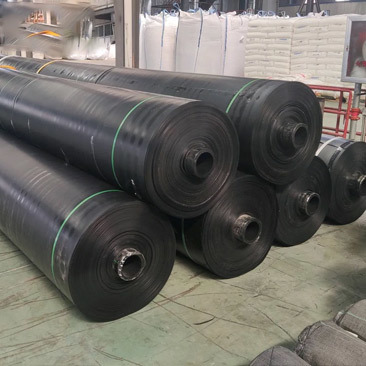Understanding PE Geomembrane: A Key Component in Construction and Civil Engineering
Release time:
2025-10-05
PE geomembrane is a synthetic membrane liner or barrier made from polyethylene, widely utilized in various construction and engineering projects. Its primary function is to provide a waterproofing solution that prevents the migration of liquids and gases, making it an essential material in several applications, particularly in civil engineering, landfill construction, and water containment systems
PE geomembrane is a synthetic membrane liner or barrier made from polyethylene, widely utilized in various construction and engineering projects. Its primary function is to provide a waterproofing solution that prevents the migration of liquids and gases, making it an essential material in several applications, particularly in civil engineering, landfill construction, and water containment systems.
One of the most significant advantages of PE geomembrane is its outstanding chemical resistance. It effectively resists a wide range of chemicals, including acids, bases, and salts, which makes it suitable for use in hazardous waste management and containment. Additionally, its durability ensures a long service life, reducing the need for frequent replacements, which can lead to substantial cost savings in the long run.
Furthermore, PE geomembrane is lightweight and easy to handle, making installation more efficient compared to traditional materials. Its flexibility allows it to conform to various shapes and surface irregularities, ensuring a secure fit in diverse environments. This characteristic is particularly beneficial in projects like landfills, ponds, and reservoirs, where the geomembrane must adapt to varying landscapes.
In terms of environmental protection, PE geomembrane plays a crucial role in preventing soil and groundwater contamination. By acting as a barrier, it mitigates the risk of leachate from landfills or industrial sites infiltrating into the natural ecosystem. This function is vital for compliance with environmental regulations, highlighting the material’s importance in sustainable construction practices.
The installation of PE geomembrane requires careful planning and execution. Proper site preparation, including the removal of sharp objects and debris, is essential to ensure the integrity of the membrane. Additionally, welding techniques must be employed to create seamless joints, enhancing the overall effectiveness of the barrier.
In conclusion, PE geomembrane is an invaluable asset in the realm of construction and civil engineering. Its chemical resistance, durability, lightweight nature, and environmental protection capabilities make it a preferred choice for various applications. Understanding the functionalities and benefits of PE geomembrane can lead to more efficient project execution and sustainable practices in the industry. As you consider your next project, recognizing the integral role of this material will empower you to make informed decisions that contribute to the long-term success of your initiatives.
One of the most significant advantages of PE geomembrane is its outstanding chemical resistance. It effectively resists a wide range of chemicals, including acids, bases, and salts, which makes it suitable for use in hazardous waste management and containment. Additionally, its durability ensures a long service life, reducing the need for frequent replacements, which can lead to substantial cost savings in the long run.
Furthermore, PE geomembrane is lightweight and easy to handle, making installation more efficient compared to traditional materials. Its flexibility allows it to conform to various shapes and surface irregularities, ensuring a secure fit in diverse environments. This characteristic is particularly beneficial in projects like landfills, ponds, and reservoirs, where the geomembrane must adapt to varying landscapes.
In terms of environmental protection, PE geomembrane plays a crucial role in preventing soil and groundwater contamination. By acting as a barrier, it mitigates the risk of leachate from landfills or industrial sites infiltrating into the natural ecosystem. This function is vital for compliance with environmental regulations, highlighting the material’s importance in sustainable construction practices.
The installation of PE geomembrane requires careful planning and execution. Proper site preparation, including the removal of sharp objects and debris, is essential to ensure the integrity of the membrane. Additionally, welding techniques must be employed to create seamless joints, enhancing the overall effectiveness of the barrier.
In conclusion, PE geomembrane is an invaluable asset in the realm of construction and civil engineering. Its chemical resistance, durability, lightweight nature, and environmental protection capabilities make it a preferred choice for various applications. Understanding the functionalities and benefits of PE geomembrane can lead to more efficient project execution and sustainable practices in the industry. As you consider your next project, recognizing the integral role of this material will empower you to make informed decisions that contribute to the long-term success of your initiatives.






